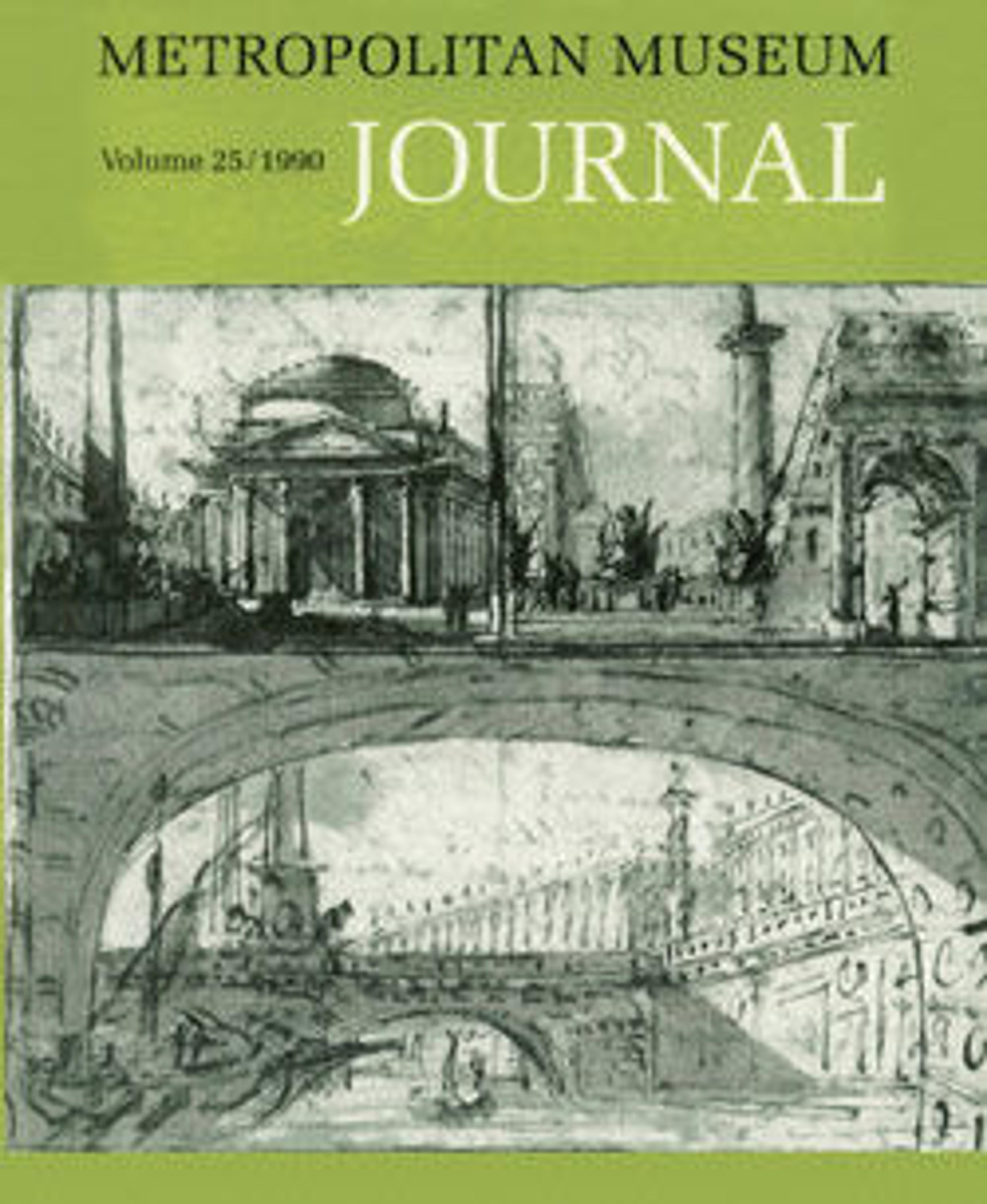Kosode with Scenes from Nō Plays
In the late Edo period, kosode (“small-sleeved” robes) with this type of decorative scheme—dense landscape patterns accompanied by scenes alluding to traditional Japanese literature—conveyed an aristocratic flavor and were popular among women of the samurai class. The back of this robe features motifs that allude to three Nō plays. At the lower center, a colorful feather robe, fishing rod, and creel recall The Feather Mantle (Hagoromo), a play about a fisherman who finds a celestial being’s feather robe on a pine branch at Miho Beach. The divinity performs a dance to retrieve her robe and then ascends to heaven.
Near the seam of the left sleeve are a helmet, crossed arrows, and plum trees that recall The Quiver (Ebira). In this play, a warrior of the Genji clan, Kajiwara Kagesue (1162–1200), performs bravely in battle against the Heike near the Ikuta River (near modern Kobe), with a plum branch in his quiver.
Lady Shizuka at Yoshino (Yoshino Shizuka) is represented at the seam of the right sleeve by an eboshi court hat, a fan, and a drum in a stage-prop structure surrounded by blossoming cherry trees. In this play, the famous twelfth-century warrior Minamoto no Yoshitsune angers his powerful brother Yoritomo and is forced to flee. His lover, Shizuka, uses a seductive dance to distract his enemies, allowing him to reach safety on Mt. Yoshino.
Near the seam of the left sleeve are a helmet, crossed arrows, and plum trees that recall The Quiver (Ebira). In this play, a warrior of the Genji clan, Kajiwara Kagesue (1162–1200), performs bravely in battle against the Heike near the Ikuta River (near modern Kobe), with a plum branch in his quiver.
Lady Shizuka at Yoshino (Yoshino Shizuka) is represented at the seam of the right sleeve by an eboshi court hat, a fan, and a drum in a stage-prop structure surrounded by blossoming cherry trees. In this play, the famous twelfth-century warrior Minamoto no Yoshitsune angers his powerful brother Yoritomo and is forced to flee. His lover, Shizuka, uses a seductive dance to distract his enemies, allowing him to reach safety on Mt. Yoshino.
Artwork Details
- 萌黄縮緬地風景能楽模様小袖
- Title:Kosode with Scenes from Nō Plays
- Period:Edo period (1615–1868)
- Date:late 18th–early 19th century
- Culture:Japan
- Medium:Resist-dyed and embroidered silk crepe
- Dimensions:72 x 50 in. (182.9 x 127cm)
- Classification:Costumes
- Credit Line:Gift of Mrs. Hamilton King, 1956
- Object Number:56.59
- Curatorial Department: Asian Art
More Artwork
Research Resources
The Met provides unparalleled resources for research and welcomes an international community of students and scholars. The Met's Open Access API is where creators and researchers can connect to the The Met collection. Open Access data and public domain images are available for unrestricted commercial and noncommercial use without permission or fee.
To request images under copyright and other restrictions, please use this Image Request form.
Feedback
We continue to research and examine historical and cultural context for objects in The Met collection. If you have comments or questions about this object record, please contact us using the form below. The Museum looks forward to receiving your comments.
